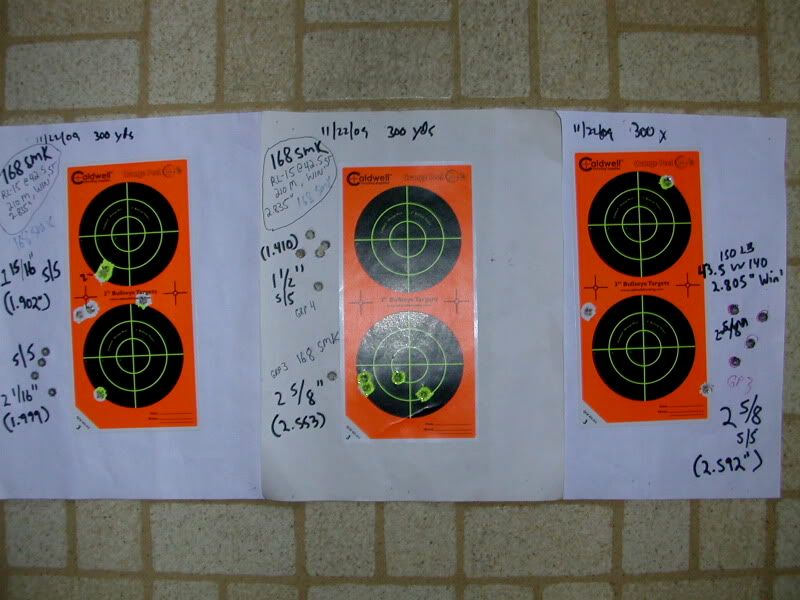Savage 308, 26" inch tube, about 2600-2700 rounds of moderately loaded ammo. 90-95% of them in 44grs range using Varget, IMR 4895 and RE-15.
I took some StoneyPoint/Hornady measurements maybe at 1200 rounds and got X, Y and Z numbers using the same brand, but not the exact same bullets that I used last week to remeasure and all were seating much longer.
From .020" to about .050" for a 178 AMAX. I measured 155 Palmas, 168/175 SMKs, 155/167 Scenars and the AMAX.
I have some dummy method measurements from the beginning, but I'm not considering them.
Is about .020"-050" of throat errosion from 1200-2700 rounds typical?
I figure the bullets are from different production lots, but they shouldn't be varying that much, so TE is the main issue.
It still shoots OK, so I'm not worried, but now I can load past mag length on some of them, for sure.

Thanks for the opinions.
Chris
I took some StoneyPoint/Hornady measurements maybe at 1200 rounds and got X, Y and Z numbers using the same brand, but not the exact same bullets that I used last week to remeasure and all were seating much longer.
From .020" to about .050" for a 178 AMAX. I measured 155 Palmas, 168/175 SMKs, 155/167 Scenars and the AMAX.
I have some dummy method measurements from the beginning, but I'm not considering them.
Is about .020"-050" of throat errosion from 1200-2700 rounds typical?
I figure the bullets are from different production lots, but they shouldn't be varying that much, so TE is the main issue.
It still shoots OK, so I'm not worried, but now I can load past mag length on some of them, for sure.

Thanks for the opinions.
Chris
